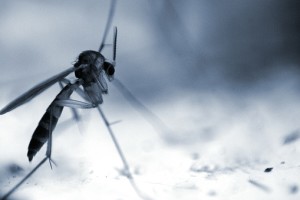The Zika arbovirus is spread by Aedes mosquitoes. First identified in Ugandan primates in 1947, the first large Zika virus outbreak in humans occurred in the South Pacific in 2007. Since then, it has spread throughout the South Pacific, parts of Africa and Asia, Central and South America and also now in the United States.
Many Zika infections are asymptomatic or mildly symptomatic. Common symptoms include low grade fever, maculopapular rash, muscle and joint pain, and other body aches. However, there are growing concerns for newborns of pregnant women infected with Zika virus. Over the past year in Brazil, there has been a 20% increase in microcephaly cases and an increase in the frequency of other birth defects. Zika virus RNA has been detected in the amniotic fluid of affected newborns, and health authorities now recommend that pregnant women avoid mosquito bites and travel to infected areas. Many questions surrounding Zika virus remain, including its impact on the transfusion medicine community.
References
- Bogoch, II, Brady OJ, Kraemer MU, German M, Creatore MI, Kulkarni MA, Brownstein JS, Mekaru SR, Hay SI, Groot E, Watts A, Khan K. Anticipating the international spread of Zika virus from Brazil. Lancet 2016.
- Fauci AS, Morens DM. Zika Virus in the Americas – Yet Another Arbovirus Threat. N Engl J Med 2016.
- Ventura CV, Maia M, Bravo-Filho V, Gois AL, Belfort R, Jr. Zika virus in Brazil and macular atrophy in a child with microcephaly. Lancet 2016.


The increase of microcephaly casse in Brasile (sa also reporter in Franch Polinesia) is 20 fold, not 20%, i.e. Much greated thai stated in the post.
There was some typing error in the comment. Sorry. The corre tra wording is: the increase in microcephaly cases in Brazil
(as also reported in French Polinesia) was 20 fold and not 20%, i.e. Much greater than stated in the post